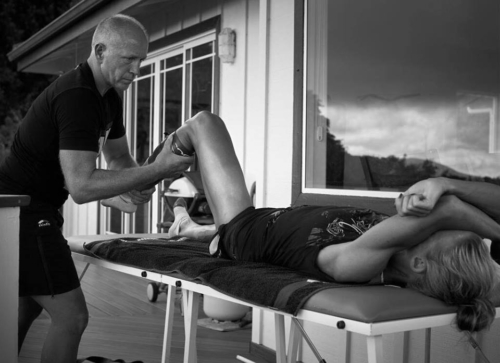Article by Arran Nicholson B.Sc (Hon’s)
The origins of massage as a treatment technique can be traced back nearly 4000 years. As a practice, it has stood the test of time and is still used extensively in sporting and therapeutic settings.
There have been some fascinating evolutions of how to apply massage and what sort of benefits you can gain from soft tissue techniques. With more and more investment in research, it will only continue to evolve.
Most of you will be aware of the relaxation and recovery benefits that can be utilised post-exercise but there is a much wider, and in some ways more beneficial, application to the fitness industry.
‘Stuck’ Clients
I’m sure as fitness professionals and personal trainers you have plenty of clients who are ‘stuck’!
‘Stuck’ from an exercise or health perspective, where they need your help for motivation, weight loss, strength, focus? But also ‘stuck’ from a myofascial perspective, an area that some of you may not have considered?
 Myofascia is the structure consisting of our muscles tissue (myo) and fascia, or connective tissue within our bodies. Everyone has it, and it is constantly replenishing and adapting to the stresses we place on it in every day life. In people who are generally healthy, active and participate in a combination of different types of exercise, this tissue is kept supple during our movements.
Myofascia is the structure consisting of our muscles tissue (myo) and fascia, or connective tissue within our bodies. Everyone has it, and it is constantly replenishing and adapting to the stresses we place on it in every day life. In people who are generally healthy, active and participate in a combination of different types of exercise, this tissue is kept supple during our movements.
The problems start to appear when repetitive activity or inactivity causes the tissue to stretch in certain regions and adhere to tissues in other regions. Over time, this adherence and stickiness can begin to limit our range of movement through our joints and cause postural related problems and other injuries.
Who’s at Risk?
Keeping supple and mobile is a key factor in succeeding with an exercise plan. We might get our clients to stretch or use foam roller before and after our sessions, but picture a client who hasn’t exercised for a few years. Perhaps someone who works in an office? Someone who sits, stands or drives a lot with work? The repetition of these movements will condition the body to move a certain way.
Now take them into the gym and start an exercise program of squats, lunges, maybe press-ups and some cable work? If they are not mobile enough, we can introduce them to some risky positions straight away. Re-education of movements during their gym sessions can have a great effect on mobilising some of these tissues, but we can have a direct effect on these tissues ourselves using massage and soft tissue release.
Importantly, as massage therapists we have a great opportunity to assess and identify areas of tightness and restriction before they cause injuries. Providing a client with some soft tissue release can help to ‘un-stick’ them, aiding to improve posture and movement to compliment and progress their training.
If you want to add massage to your portfolio of skills, consider booking your sports massage qualification today.
